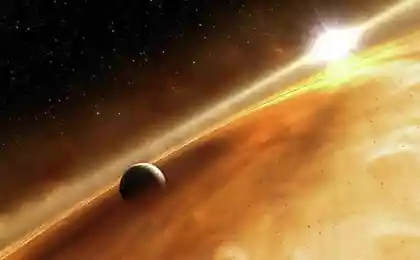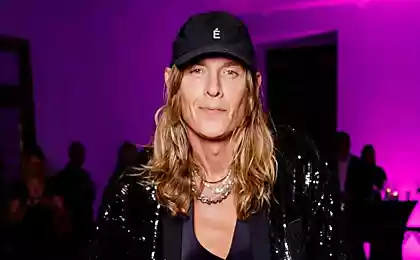457
Found a planet that age your star
Fifty six million seven hundred thirteen thousand one hundred twenty two
A new study has shown that a massive exoplanet makes its parent star, gradually destroying its magnetic field. As a result, the star does not behave according to age. According to scientists, she feels older than it really is.
WASP-18b is an extreme exoplanet. This is one of the most massive hot Jupiters known to science, and one of the most nearby objects to its star. It behaves in an unexpected way. Planet causes its star to age prematurely, says the study's lead author Ignazio Pillitteri, of the National Institute of astrophysics in the Italian city of Palermo.
The star WASP-18, located approximately 330 light years from Earth, has a mass approximately equal to the mass of the Sun. The gas giant WASP-18b, in turn, more than 10 times more massive than Jupiter. The planet makes one revolution around the parent star in less than 23 hours, which klassificeret it as a "hot Jupiter".
According to scientists, the planet WASP-18b will live about one million years before being destroyed by its parent star, writes resource Space.com.
Observing WASP-18 with x-ray Observatory Chandra NASA team Pillitteri found that the star is relatively quiet, which is typical for older stars. Young stars, in contrast, are characterized by high activity, strong magnetic fields, powerful flares and more intense x-ray radiation. The activity of the star is related to its rotation around the axis. With age this process slows down.
Researchers have estimated that the age of WASP-18 ranges from 500 million to 2 billion years. Thus, the activity of this star is 100 times lower than that of its peers. At the same time, scientists blame a nearby planet, which disrupts the magnetic field of the star. Such an effect similar to the effect of the tides on the Earth due to gravitational attraction of the moon, but on a much larger scale.
The results of the study were published in the journal Astronomy and Astrophysics.
Previously, other astronomers made the interesting discovery. They found traces of the oldest stars in the Universe.
Source: hi-news.ru
A new study has shown that a massive exoplanet makes its parent star, gradually destroying its magnetic field. As a result, the star does not behave according to age. According to scientists, she feels older than it really is.
WASP-18b is an extreme exoplanet. This is one of the most massive hot Jupiters known to science, and one of the most nearby objects to its star. It behaves in an unexpected way. Planet causes its star to age prematurely, says the study's lead author Ignazio Pillitteri, of the National Institute of astrophysics in the Italian city of Palermo.
The star WASP-18, located approximately 330 light years from Earth, has a mass approximately equal to the mass of the Sun. The gas giant WASP-18b, in turn, more than 10 times more massive than Jupiter. The planet makes one revolution around the parent star in less than 23 hours, which klassificeret it as a "hot Jupiter".
According to scientists, the planet WASP-18b will live about one million years before being destroyed by its parent star, writes resource Space.com.
Observing WASP-18 with x-ray Observatory Chandra NASA team Pillitteri found that the star is relatively quiet, which is typical for older stars. Young stars, in contrast, are characterized by high activity, strong magnetic fields, powerful flares and more intense x-ray radiation. The activity of the star is related to its rotation around the axis. With age this process slows down.
Researchers have estimated that the age of WASP-18 ranges from 500 million to 2 billion years. Thus, the activity of this star is 100 times lower than that of its peers. At the same time, scientists blame a nearby planet, which disrupts the magnetic field of the star. Such an effect similar to the effect of the tides on the Earth due to gravitational attraction of the moon, but on a much larger scale.
The results of the study were published in the journal Astronomy and Astrophysics.
Previously, other astronomers made the interesting discovery. They found traces of the oldest stars in the Universe.
Source: hi-news.ru























